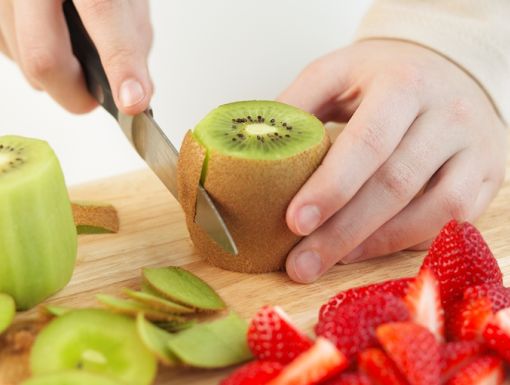
Food Journaling: Recording Your Way to Success
With so much nutrition, exercise, and diet information available to us, weight loss can often be overwhelming. Where do you start? How can you be successful with your changes in lifestyle? These are just a few of the questions that people often ask themselves at the start of a weight loss journey.
One good place to start: food journaling. Research has shown that female participants who kept a food journal lost 10% of their body weight over a year. Apps made available through smart phones or websites like MyFitnessPal or MyNetDiary can be very useful because they are convenient and offer helpful tips along the way. If good ole fashioned pen and paper is more your style, this may offer an even stronger connection during the food journaling process.
Top food journaling strategies include:
1. Recording the food as close to the meal as possible. Once you’re home after a long day, it can be challenging to recollect food or drinks (yes, that 2 PM grande vanilla latte counts!) that you consumed throughout the day.
2. Be specific. It’s helpful to record each food and the amount separately to have a more accurate idea of your consumption. For example, if you’re eating a salad for lunch, write down each vegetable contained in the salad along with the amount of dressing used, whether it is one packet or 2 tablespoons.
3. Record calories, protein, carbohydrates, and fats contained in the food. It is optional to track sugar, fiber, and sodium depending on what your goal is. If you are trying to consume a more heart healthy diet, record the sodium in your dishes. If using pen and paper, MyFitnessPal is a good resource to look up the macronutrients in different food or drink items.
4. Identify how the meal or snack made you feel! This allows you to effectively identify which foods best help to power you through your day, or increase lethargy. If the salad with quinoa, tomatoes, black beans, corn, sunflower seeds, and a vinaigrette that you ate for lunch left you with energy until the end of your work day, choose this item over a cheeseburger and fries that might leave you feeling full and tired. Also, you can track hunger or fullness rating to see if you are eating when you feel physically hungry. Sometimes we eat when we are bored, worried, or sad, or even during a certain behavior, like watching TV.
Benefits of food journaling:
1. Food recognition. Meal planning becomes quicker and easier after a few weeks of food journaling as you get to know which foods positively contribute to your diet and how they made you feel.
2. Increases awareness. This tracks the individual patterns of over- or under-eating throughout the day. Food journaling can help decrease mindless eating and gives you a reality check of what exactly you are consuming daily.
3. Identifies triggers. Food journaling can help detect any food intolerances that may be occurring that you might already be aware of.
4. Tracks overall wellness behaviors. Recording foods daily can be good for someone who is focused on developing better habits, especially people with restricted dietary guidelines like diabetics.
There are many wonderful benefits of food journaling beyond being a weight loss companion. The focus should never be to judge or be harsh on you, but rather help to identify and learn your dining and wellness behaviors.


